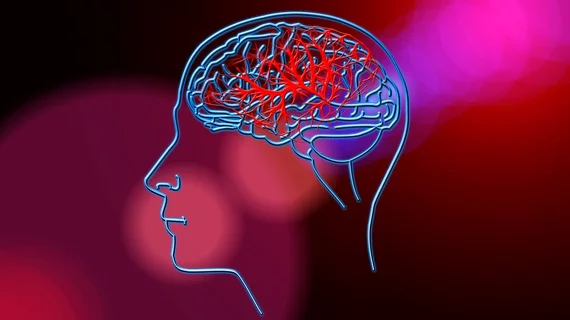Dual energy CT parameters help determine the type of clot behind strokes
Certain parameters derived from dual energy computed tomography (DECT) scans can help providers determine the type of blood clot that could be the cause of patients’ acute ischemic stroke.
Having knowledge of whether a clot is either red blood cell-dominant or fibrin/platelet (F/P)-dominant could guide clinical management decisions. Previous studies have indicated that RBC-dominant thrombi are more responsive to intravenous thrombolysis, while F/P-rich thrombi have characteristics that make them more suitable for stent retriever thrombectomy, authors of a new paper in the European Journal of Radiology explain.
“Studies have shown that the quantity and subtype of red blood cells (RBCs) in thrombi significantly influence the efficacy of acute ischemic stroke treatment,” corresponding author Yuan Liu, with the Department of Radiology at the First Affiliated Hospital of Shantou University Medical College, and colleagues note. “Acquiring a pretreatment understanding of this factor may provide new insights into personalized stroke management strategies.”
Though MRI provides detailed insight into clot composition, its use is time consuming, and the modality is not always readily available in cases of acute ischemic stroke. Noncontrast DECT exams enable various post-processing techniques that allow providers to visualize clots in greater detail, though research on the utility of this exam in stroke care is limited.
To better understand the utility of DECT for differentiating clot composition, researchers analyzed the cases of 42 patients who underwent brain DECT noncontrast scans and brain CT perfusion (CTP) prior to thrombectomy. Data from the DECT scans were used to reconstruct polychromatic images and effective atomic number images, and CT values, effective atomic numbers and spectral curve slopes of the clots were calculated for comparison.
Thrombus composition was analyzed following thrombectomy and then compared to each imaging parameter to determine whether certain characteristics were indicative of clot composition.
RBC-dominant thrombi were present in 24 participants. This group displayed significantly higher effective atomic numbers, spectral curve slopes and polychromatic image CT values compared to the 18 individuals who had F/P-rich clots. The polychromatic image CT values were found to be the most effective parameter for distinguishing between the two clot types.
“This differentiation can contribute to selecting clinical treatment strategies and assessing prognosis,” the group suggests.
The authors acknowledge that their work was limited by a small sample size and the use of nonenhanced DECT exams alone. They suggest that future work could include the addition of contrast-enhanced scans to determine if there is additional insight to be gained from having both exams.

